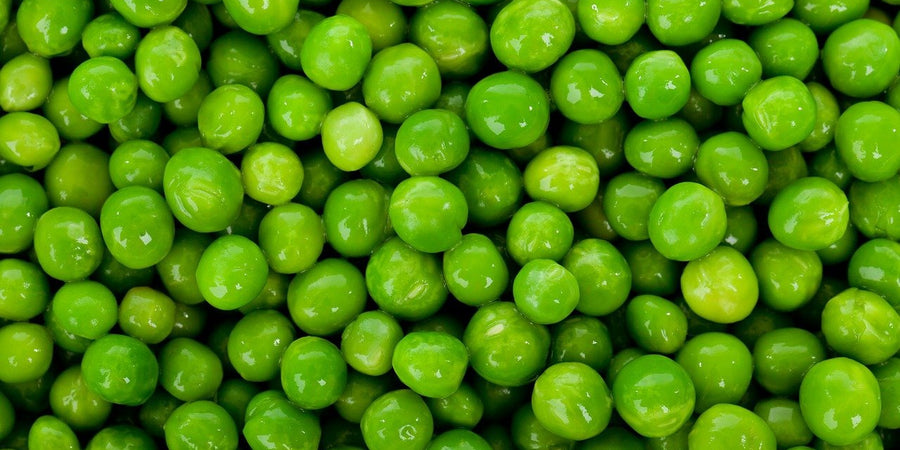How To Grow Peas

Peas are one of the vegetables that are naturally sweet and even if space is short in the kitchen garden, growing and harvesting from just a few plants, the taste surpasses any shop bought variety. These climbing plants can produce harvest from spring right through to autumn which can be achieved with succession growing.
There are several varieties to choose from if you do not wish to grow the popping variety. There are the Sugar Snap and Mangetout that are best harvested before pea seed sets in. And for year-round delight try growing Pea Shoots indoors.
Here's Our Guide to Growing Peas:
How, Where & When to Grow Peas
Sow pea seed in rich moisture retentive soil that has been improved with well-rotted compost. Choose a sunny sheltered spot and sow directly in late spring as the soil warms up. Make a trench 25cm wide, 5cm deep and sow seeds 5cm apart on either side of the trench. Main crop variety should be sown early summer. In 7 to 10 days the seedlings will germinate as long as growing conditions are met. Peas can also be sown in lengths of guttering in order to germinate indoors for a head start in February/March time.
If you want to extend your pea cropping season then look to sow in 3 stages:
| First Earlies | Second Earlies | Maincrop |
| Pea Douce Provence | Pea Hurst Greenshaft | Pea Alderman |
 |
 |
 |
Distance
Sow seeds on either side of the 25cm trench with 5cm distance between the seeds, back fill and provide support (variety dependent) by anchoring in pea sticks once germination takes place.
Regular Care
Water regularly during dry summer spells and with onset of first flowers; a weekly feed of high potash will help not only produce full pods but boost further growth as well. Protect young seedlings against slug pest and may require netting against butterflies laying eggs after which the larvae burrow into the pod to feed on the peas.
Harvesting Peas
Peas are ready to harvest 10-12 weeks after sowing for early crops and 14-16 weeks for main crop. Harvest when pods are small and tender and pick regularly or the plant will stop producing flowers and pods. By choosing varieties carefully it is possible to harvest fresh peas from June through to end of October.

Nutrition
Peas, because they are a legume, are naturally high in protein containing 5.5g per 100g portion, and fibre at 5.6g per 100g. They are low in fat, just 1.6g per 100g, low in carbohydrates at 10g per 100g, and low in calories with 79 calories per 100g. Their low carbohydrate content also means they are naturally low in sugar with just 1.2g per 100g. Nutritionally, peas are a good source of some vitamins and minerals. In particular they are a good vegan source of iron, which is needed for making new red blood cells and transporting oxygen around the body, and B vitamins, which help us convert the energy from our food.
Culinary
With an abundance of fresh Peas nothing can beat a wonderfully light and summery Pea soup which can use the pod and the pea…try creating guacamole with Peas for a twist…and for a super easy and quick supper cook up gnocchi with Peas and pancetta and a light grating of parmesan. Hmmm.
Growing Guides
If you're thinking of sowing other vegetable and herb seeds, discover more of our growing guides.
Buy Pea seeds today:




